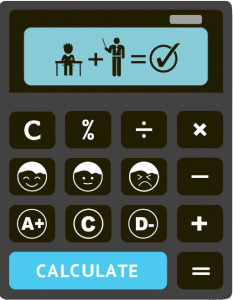Overview
In Year 6 Maths, you are about to embark on an exciting journey exploring the fascinating world of numbers and place value. This topic is crucial as it forms the foundation for more advanced mathematical concepts you’ll encounter in the coming years. Understanding numbers and their place value unlocks the door to solving complex problems and lays the groundwork for your mathematical prowess. So, let’s dive in and discover the magic of numbers together!
Learning Outcomes
By the end of this article, you will:
- Master the concept of expanded notations using place values.
- Learn how to round numbers to the nearest hundred, thousand, ten thousand, and so on.
- Be able to add and subtract numbers with positive and negative outcomes.
- Differentiate between prime and composite numbers.
- Understand the Highest Common Factor (HCF).
- Grasp the concept of the Lowest Common Multiple (LCM).
Expanded Notation
Let’s start by exploring expanded notation, a powerful tool that helps us understand how numbers are built from their place values. Take the number 7,189,624, for example. Breaking it down using place values, we can write it as:
(7 x 1,000,000) + (1 x 100,000) + (8 x 10,000) + (9 x 1,000) + (6 x 100) + (2 x 10) + (4 x 1)
Isn’t it amazing how each digit’s place value contributes to the overall value of the number? This method allows us to comprehend numbers on a deeper level and perform operations more efficiently.
Rounding
Rounding numbers is a handy technique when you want to approximate values quickly. Let’s consider the number 16,487. To round it to the nearest hundred, we focus on the tens place. Since the digit in the tens place, 8, is greater than or equal to 5, we round the number up to 16,500.
Now, let’s round it to the nearest thousand. Looking at the hundreds place, which is 4, we keep the thousands place intact and round down to 16,000.
Lastly, rounding to the nearest ten thousand, we examine the thousands place, which is 6. As it is greater than or equal to 5, we round up to 20,000.
Question: Can you try rounding the number 34,925 to the nearest hundred, thousand, and ten thousand? Take a moment to give it a shot.
Positive and Negative Numbers
Understanding positive and negative numbers is like having a compass to navigate through mathematical operations. Remember, 0 is right in the centre of the number line. The positives are to the right of it, and the negatives are to its left.
On a number line, adding a number means hopping to the right, while subtracting involves hopping to the left. Let’s explore a few examples:
-5 + 3 = -2
In this case, we start at -5 and hop three units to the right, landing at -2.
-1 – 8 = -9
Starting at -1, we hop eight units to the left, reaching -9.
3 – 7 = -4
Beginning at 3, we move seven units to the left, ending up at -4.
Primes and Composites
Numbers can be classified as primes or composites. Prime numbers are those that have only two factors: 1 and the number itself.
For instance, consider the number 12. It has factors 1, 2, 3, 4, 6, and 12, making it a composite number.
On the other hand, 17 is a prime number, as its only factors are 1 and 17.
Questions: What do you think about 1? Is it prime or composite? Why can’t even numbers be prime? Can you think of an exception?
Highest Common Factor (HCF)
HCF is the greatest common divisor between two or more numbers. Let’s consider the numbers 12, 20, and 28.
12=4×3
20=4×5
28=4×7
As you see, 4 is the highest number that divides each of the given numbers. Therefore, their HCF is 4.
Lowest Common Multiple (LCM)
The Lowest Common Multiple (LCM) is the smallest multiple that two or more numbers have in common. The LCM of 12, 20 and 28 is 420. How can you verify it? Think!
Wrap Up
Congratulations on exploring the captivating world of numbers and place value in Year 6 Maths! We have only scratched the surface of what this topic entails. The concepts discussed here are just a taste of the exciting journey that lies ahead. If you are eager to delve deeper into Year 6 Maths and explore more topics, feel free to contact us.

